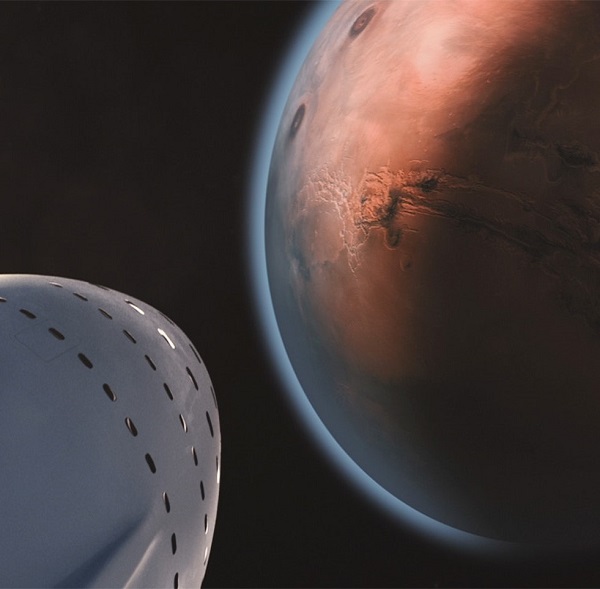Space radiation, an adversary to humankind’s celestial aspirations, casts its ominous shadow over the ambitious dreams of lunar and Martian exploration. Solar energetic particle (SEP) generated by solar eruptions can increase radiation levels, potentially endangering astronauts’ health. Powerful SEP events can also cause ground level enhancements (GLEs), increasing radiation levels on the planet’s surface.
A research team led by Prof. GUO Jingnan of the University of Science and Technology of China (USTC) of the Chinese Academy of Sciences (CAS), collaborated with researchers from Germany, Bulgaria and the United States focused on analyzing a SEP event that occurred on October 28, 2021, whose energy was sufficient to cause a GLE event on Earth’s surface. Additionally, the Chang’e 4 lunar mission on the lunar surface and the Curiosity rover on the Martian surface both detected this high-energy particle event. This is the first GLE event detected on the surfaces of three planetary bodies. By combining measurement and modeling approaches, the team studied the potential radiation risks posed by SEPs that future humans may face on the Moon and Mars.
Earth’s magnetic field and atmosphere provide protection against space charged particles with lower energy. The GLE the team studied, known as GLE73, is the most recent GLE event that people have ever detected. And although Earth’s shielding mitigates the risks, the Moon and Mars lack similar protection.
The Moon lacks a global magnetic field and atmosphere, making it vulnerable to SEP particles. China’s Chang’e-4 lunar mission and NASA’s Lunar Reconnaissance Orbiter (LRO) observed the GLE73 event, but the radiation doses measured were within safe limits. However, simulations suggest that without adequate shielding, future lunar missions could face radiation risks during approximately one out of every five SEP events, which will further pose a serious threat to the lives of astronauts.
Mars, positioned between the Moon and Earth, lacks a global magnetic field but possesses a thin atmosphere that can absorb high-energy particles. The recent GLE73 event, observed by instruments on the ESA ExoMars TGO and NASA’s MSL, showed that radiation levels in Mars orbit were approximately 30 times higher than on the Martian surface. This indicates the Martian atmosphere’s strong absorption of radiation induced by SEPs. However, it provides limited shielding against background galactic cosmic rays (GCR). Simulations reveal that past GLE events on the Martian surface remained below the acute radiation syndrome (ARS) threshold. Nevertheless, extreme SEP events during the journey to Mars or in Martian orbit pose a significant radiation risk for future deep space missions.
In conclusion, when the solar high-energy particles reach the earth, the moon and Mars, their fates and radiation effects are not the same. Recent detection of a SEP event on the lunar and Martian surfaces highlights the need to address these challenges. Therefore, further research and effective shielding measures are crucial for astronaut safety.
Source: eurekalert










